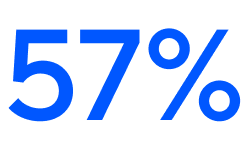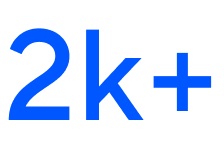A conversation with Aglet: Boosting support efficiency with bots and automation
With David Hooper, Senior Support Manager at Aglet


of conversations handled by Resolution Bot are automatically resolved

support team hours saved

self-serve support rate
We spoke with David Hooper, Senior Support Manager at Aglet, about the benefits of leveraging bots and automation to power stellar customer service at scale – and how his team uses personalized, in-product messaging to drive increased adoption.
David, can you tell us a bit about Aglet and your role?
Absolutely. I’m David Hooper and I’m a Senior Support Manager at Aglet. Aglet is a location-based app that connects sneakerheads, creators, and brands. Essentially, players can rack up steps to earn currency, and then use that currency to buy virtual sneakers.
Why did you start using Intercom? What support challenges were you trying to overcome?
We’ve been using Intercom as our customer service platform since day one here at Aglet. The reason we chose Intercom was because we needed a solution that would enable us to provide the best possible customer experience. Our product is mobile-first and quite complex, so our support solution of choice needed to be well suited to our needs. We wanted to be able to provide customers with support in-context – right in our app – but also have the flexibility to meet and serve customers where they are.
When it comes to our customers, we have a broad, distributed user base that spans many time zones. That also means we have a consistently high volume of support queries. In the early days, we were working day and night to respond to all customers and clear our support inbox, which is why we’ve leaned heavily into bots and automation to help us manage inbound conversation volume, while still being able to provide customers with a personal support experience.
What are the benefits of having Intercom as your support solution?
With Intercom, we’ve been able to consolidate all of our support in one place and prioritize customer issues in real-time. Its automation has also been hugely helpful in enabling us to scale our support and customer messaging, making it much easier for us to be efficient, save time, and reduce manual work on the team. All of this has a positive impact on our customers, too. By implementing efficiency improvements, we’ve already reduced our time to close for support queries by 55%.
To date, [Articles] has helped 78.8% of our customers to self-serve answers to their own questions. That amounts to more than 250,000 inbound queries that we were able to resolve without human intervention.

Senior Support Manager at Aglet
When it comes to self-serve support, Intercom’s Articles feature is a big deal for us. We use it to host all of our help documentation, and to date, it has helped 78.8% of our customers to self-serve answers to their own questions. That amounts to more than 250,000 inbound queries that we were able to resolve without human intervention, which has freed up a significant amount of our Support team’s time.
We’ve implemented Resolution Bot across multiple markets and languages to enhance our support capabilities. This currently covers over 20% of our inbound conversations and the bot is resolving a staggering 57% of the conversations it deals with. This year, Resolution Bot alone has saved our customers 23,452 hours and our team 2,102 hours. We’re very happy with the results we’ve seen so far. If I were to pick my favorite Intercom feature, it would be Resolution Bot. It handles so much inbound volume that I’d really miss it if we didn’t have it.
Outside of supporting customers, how else are you using Intercom to connect with them?
We leverage app-level data from our own product and Intercom data to re-engage players of Aglet. We’re able to understand their journeys and highly personalize messaging so we can reach them when and where it’s most needed – for example, we deliver key messages from the first day a user signs up, through days three, four, and 10, to guide them through their journey with us. We also use the Messenger to share important news and announcements.
Our game is complex, so we use targeted Mobile Carousels to guide players through the game and help them learn how to play it. This has been really successful for us so far and helps us to create a great experience for our users.
How does Intercom fit into the rest of your tech stack? What tools have you integrated with Intercom?
We’ve integrated multiple inbound channels, like Facebook, Instagram, and WhatsApp with Intercom so we can manage all of our support in one place. We’ve also built integrations with key tools that we use internally, like MixPanel, which helps us pass events and data attributes to Intercom quickly. This enables us to more easily identify fraudulent accounts. In addition to that, we’ve also integrated Intercom with Slack so we can notify our Product and Engineering teams of support conversations that need their input or attention.
Are there any opportunities you’re excited to unlock with Intercom in the future?
I’m looking forward to digging into the new next-generation Messenger and News feature to engage users with unobtrusive, in-app communications around our product updates. Outside of that, there are other elements of automation that we want to build out more, which will allow us to further streamline our support and connect with our customers at scale, as well as ensure that we’re continuing to create the best possible experiences for them throughout their journey with us.